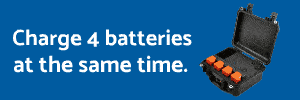- Joined
- Apr 27, 2023
- Messages
- 10
- Reaction score
- 2
- Age
- 42
Everyone
I am having an issue. My field surveyor is working on the boarder of New Hampshire and Massachusetts. Our project is in New Hampshire and is NAD83 New Hampshire (FTUS) and NAVD88 (FTUS). He connected our Autel Evo 3 RTK to the Masscores Network (because it was closer than anything in NH) and preformed a drone topo of the site. He told me the drone does not give him the option to pick which state plain he is working in. I processed the flight in Pix4Dmatic and Pix4dmapper. When I process it in Matic I use NAD83 New Hampshire (FTUS) and NAVD88 (FTUS) and Geoid 18. At the end of the process I get a large RMS error of .45ft. The surface is between .1ft -1ft off my random grid check.
Questions
1 Does Autel give you the ability to pick your Horizontal and vertical datum when connecting to a RTK Network?
2 If no above what does it use and how does that relate to a Geoid?
3 Does RTK Reference station send the information in their respective state plain or is it a static position?
4 If static position above how does that relate to processing?
Thanks in advance to anyone taking the time to help me.
I am having an issue. My field surveyor is working on the boarder of New Hampshire and Massachusetts. Our project is in New Hampshire and is NAD83 New Hampshire (FTUS) and NAVD88 (FTUS). He connected our Autel Evo 3 RTK to the Masscores Network (because it was closer than anything in NH) and preformed a drone topo of the site. He told me the drone does not give him the option to pick which state plain he is working in. I processed the flight in Pix4Dmatic and Pix4dmapper. When I process it in Matic I use NAD83 New Hampshire (FTUS) and NAVD88 (FTUS) and Geoid 18. At the end of the process I get a large RMS error of .45ft. The surface is between .1ft -1ft off my random grid check.
Questions
1 Does Autel give you the ability to pick your Horizontal and vertical datum when connecting to a RTK Network?
2 If no above what does it use and how does that relate to a Geoid?
3 Does RTK Reference station send the information in their respective state plain or is it a static position?
4 If static position above how does that relate to processing?
Thanks in advance to anyone taking the time to help me.





